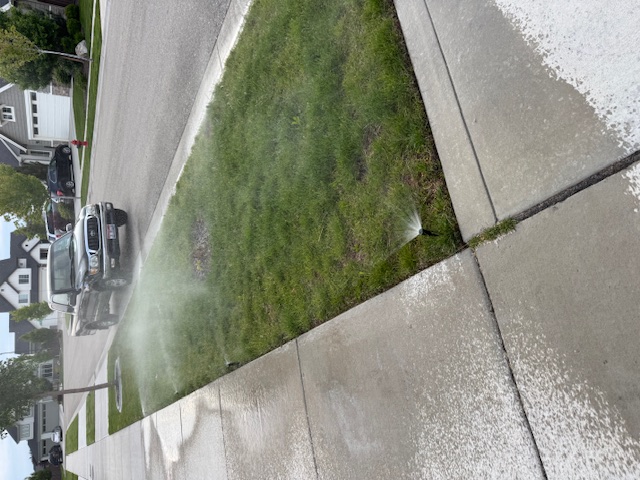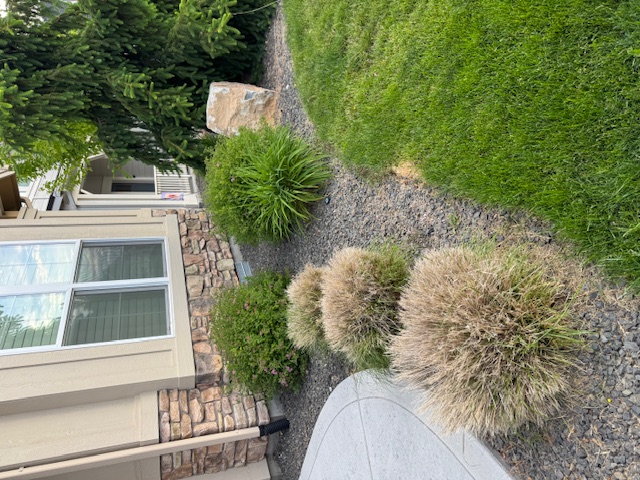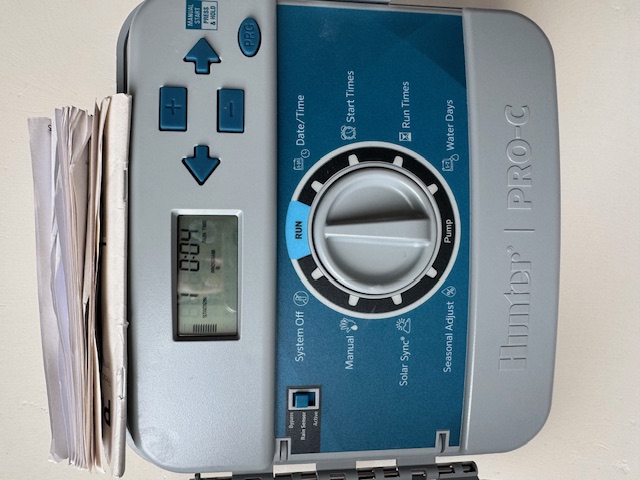Irrigation & Sprinkler System Water Usage Calculator
Calculate precise water requirements for your lawn or garden irrigation system. Get customized recommendations based on your location, soil type, and plants.
How to Use This Calculator
I built this irrigation calculator based on my 10+ years of experience as a homeowner setting up different lawn irrigation / sprinkler systems. Growing up in Northwest Minnesota, we hardly had to do anything to keep a lawn thriving. I don't remember watering the lawn ever throughout my childhood. But I learned this isn't the case in other regions of the United States when I became an adult, homeowner, and had to start maintaining my own property.
For my current lawn in Boise, I use a fixed spray sprinkler system with 4 watering zones: Zone 1 covers the berm in the front yard, zone 2 is the front yard, zone 3 is the backyard, and zone 4 is the drip system for trees, bushes, and other plants. I have my water scheduled for Tuesday, Thursday, and Saturday each week from April through late September, running about 5 minutes per zone. Sometimes I need to increase the frequency during July's warmest months.
Previously, I lived in Southern California with a drought resistant landscape featuring rose bushes, oleander, lavender, sage, palo verde trees, and other plants that perform well in the desert climate. I had mulch installed in both the front and backyard with no grass. Kentucky bluegrass simply won't grow in the desert. This approach helped preserve water and kept my costs lower than my neighbors.
Step 1: Enter Your Area Dimensions
Start by measuring and entering your lawn or garden area. The calculator supports multiple shapes:
- Rectangle: Most common for residential lawns. Enter length and width.
- Circle: For circular garden beds or lawn areas. Enter radius.
- Triangle: For oddly shaped corner lots. Enter base and height.
- Irregular: For complex shapes. Enter total square footage.
The calculator works with both imperial (feet, yards) and metric (meters, centimeters) units. Toggle between systems using the unit selector.

Step 2: Select Your Soil Type
Soil type dramatically affects water retention and drainage. Based on NOAA's soil classification system, I've included five soil types in this calculator:
- Sandy Soil: Drains quickly, needs 25% more water than average. Common in coastal areas and desert regions.
- Loamy Soil: Ideal balanced soil with moderate drainage. This is the baseline for calculations.
- Clay Soil: Holds water longer, needs 25% less frequent watering. Can become waterlogged if overwatered.
- Silty Soil: Good water retention but may compact. Needs 15% less water than loamy soil.
- Unknown: Use this if you're unsure. I recommend doing the simple jar test described in the NOAA guide.
If you're unsure about your soil type, try the jar test: mix soil with water in a clear jar, let it settle for 24 hours, and observe the layers. Sand settles first (bottom), then silt (middle), then clay (top).
Step 3: Choose Your Plant Type
Different plants have vastly different water requirements. I've calculated water coefficients based on agricultural extension data to try to make this tool as accurate as possible based on your lawn.
- Vegetable Garden: Highest water needs (40% more than grass). Tomatoes, lettuce, and herbs need consistent moisture.
- Flower Beds: High water demand (20% more than grass), especially during blooming periods.
- Lawn Grass: Baseline water requirements. Includes cool season grasses like fescue and warm season like Bermuda.
- Shrubs: Lower water needs (30% less than grass) once established. Perfect for water wise landscaping.
- Trees: Deep root systems require less frequent but deep watering (20% less than grass).
- Native Plants: Adapted to local climate, need 50% less water once established.
- Drought Tolerant: Succulents, cacti, and xerophytic plants need minimal water (60% less than grass).
For mixed plantings, you can specify the percentage of each plant type. For example, 70% lawn grass, 20% flower beds, and 10% shrubs.

Step 4: Select Your Sprinkler System
System efficiency varies dramatically by irrigation type. Based on irrigation industry standards, I've included these options:
- Drip Irrigation: 90% efficiency. The gold standard for water conservation. Best for shrubs, trees, and vegetable gardens.
- Micro Spray: 85% efficiency. Good compromise between drip and spray systems.
- Soaker Hose: 85% efficiency. Easy to install and move around garden beds.
- Rotary Sprinkler: 80% efficiency. My system type, good for large lawn areas with better wind resistance.
- Spray Sprinkler: 70% efficiency. Common but less efficient due to wind drift and evaporation.
- Manual Watering: 60% efficiency. Depends entirely on user technique and timing.
You can also enter a custom efficiency percentage based on your sprinklers manufacturer estimates.
Step 5: Set Your Watering Frequency
How often you water affects both plant health and total water usage. Based on research from agricultural extension services, here are some best practices for watering.
- Deep, infrequent watering: Better for root development and drought tolerance. The University of California Agriculture and Natural Resources recommends this approach to promote deeper root systems and improve plant resilience.
- Early morning watering: 4 to 8 AM minimizes evaporation losses. Texas A&M AgriLife Extension advises early morning irrigation to reduce water waste, especially in high evapotranspiration regions.
- Seasonal adjustments: More frequent in summer heat, less in cooler months
My personal schedule of Tuesday, Thursday, and Saturday works well in Boise's climate, but your optimal frequency depends on your local conditions. The research I conducted from these university extension publications helped me design the calculator's frequency recommendations to balance plant health with water conservation.
Step 6: Select Your Climate Region
Regional climate data is crucial for accurate calculations. I've used NOAA rainfall climatology data to determine evapotranspiration rates and rainfall patterns for six major climate zones.
- Pacific Northwest: Wet winters, dry summers. Minimal irrigation needed fall through spring.
- Desert Southwest: Arid climate with very low rainfall. Heavy irrigation required year round.
- Midwest: Continental climate with moderate rainfall. Supplemental irrigation often needed in summer.
- Southeast: Humid subtropical with high rainfall. Focus on dry spells and avoid overwatering.
- Northeast: Humid continental. Summer irrigation needed during dry periods.
- Great Plains: Semi arid with variable rainfall. High irrigation needs in summer.
The calculator adjusts for effective rainfall (typically 70% of total rainfall actually reaches plant roots) and seasonal evapotranspiration rates.

Step 7: Add Water Cost (Optional)
To get cost estimates, enter your local water rates. In Boise, I'm fortunate to have access to a canal irrigation system where I pay under $50 annually for unlimited irrigation water. Most homeowners pay per gallon or per 1,000 gallons. Check your water bill for current rates.
The calculator supports different billing units and provides conversions to help you understand your costs across different time periods.
Understanding Your Results
The calculator provides comprehensive results including:
- Water volumes: Per session, weekly, monthly, and annual usage in both gallons and liters.
- Water needs analysis: Breakdown of evapotranspiration, rainfall, and adjustment factors.
- System efficiency: How your irrigation system affects actual water delivery.
- Cost estimates: Project your water bills based on local rates.
- Personalized recommendations: Tips for improving efficiency and conservation.
How the Irrigation Calculator Works
Core Calculation Formulas
Here are the core calculations the tool performs to come up with results.
| Calculation | Formula |
|---|---|
| Area (Rectangle) | Length × Width |
| Area (Circle) | π × Radius² |
| Base Water Need | ET Rate - (Effective Rainfall × 0.7) |
| Adjusted Water Need | Base Need × Plant Coefficient × Soil Adjustment |
| Water Volume per Session | (Area × Water Depth × 0.623) ÷ System Efficiency |
| Weekly Water Usage | Volume per Session × Sessions per Week |
| Monthly Water Usage | Weekly Usage × 4.33 |
| Cost Estimate | Water Usage × Cost per Gallon |
The 0.623 conversion factor converts cubic feet to gallons (1 cubic foot = 7.48 gallons, and 1 inch depth over 1 square foot = 1/12 cubic feet, so 7.48 ÷ 12 = 0.623).
Plant Water Coefficients
Based on agricultural extension research, I've assigned these water requirement multipliers to different plant types:
| Plant Type | Water Coefficient | Notes |
|---|---|---|
| Lawn Grass | 1.0 (baseline) | Standard reference for irrigation, based on well-watered turf like Kentucky bluegrass. References: UC ANR, Publication 8395; Colorado State University Extension, Fact Sheet 7.202. |
| Vegetable Garden | 1.4 | High water demand due to rapid growth and high leaf area in crops like tomatoes. Reference: University of Florida IFAS, Publication CV297. |
| Flower Beds | 1.2 | Higher water needs during blooming due to active growth. References: University of Florida IFAS, Publication ENH1070; UC ANR, Publication 8503. |
| Trees | 0.8 | Deep roots allow access to more soil moisture, reducing irrigation needs for mature trees. |
| Shrubs | 0.7 | Established shrubs require less water due to moderate root depth and lower transpiration. |
| Native Plants | 0.5 | Naturally adapted to local rainfall patterns, needing minimal supplemental irrigation. |
| Drought Tolerant | 0.4 | Specialized adaptations like small leaves result in very low water requirements. |
Soil Adjustment Factors
Soil type affects water retention and drainage rates. I used data from the USDA Natural Resources Conservation Service (NRCS), Soil Survey Manual and Web Soil Survey to develop these adjustment factors that modify the base water calculation:
| Soil Type | Adjustment Factor | Water Holding Capacity |
|---|---|---|
| Sandy | 1.25 (+25%) | 0.8 inches per foot |
| Loamy | 1.0 (baseline) | 2.0 inches per foot |
| Silty | 0.85 (-15%) | 2.3 inches per foot |
| Clay | 0.75 (-25%) | 2.5 inches per foot |
Regional Climate Data Sources
The calculator uses evapotranspiration (ET) rates and rainfall data from NOAA and agricultural extension services. I used this data from Wikipedia about rainfall in different regions to determine how much rain each region gets in the United States. This gives you annual rainfall estimates based on averages. Of course, you may need to adjust your watering during times of drought or heavy rain. Here's the seasonal data I've incorporated for all six regions:
| Region | Summer ET Rate | Summer Rainfall | Irrigation Notes |
|---|---|---|---|
| Desert Southwest | 0.6 in/day | 1.0 in/month | Heavy irrigation required year round |
| Pacific Northwest | 0.25 in/day | 1.2 in/month | Supplement 0.5 to 1 in/week in summer |
| Midwest | 0.32 in/day | 4.0 in/month | Supplemental during dry spells |
| Southeast | 0.38 in/day | 5.0 in/month | Monitor for dry periods |
| Northeast | 0.3 in/day | 4.0 in/month | Summer irrigation needed during dry periods |
| Great Plains | 0.5 in/day | 3.0 in/month | High irrigation needs due to high ET and variable rainfall |
In my Southern California home, combining mulch with drought tolerant plants and efficient irrigation cut my monthly water bill compared to my neighbors.
Have other lawn care projects in mind? You might find these calculators helpful: Grass Seed Calculator for establishing new lawns or Mulch Calculator for water-conserving landscape beds.
